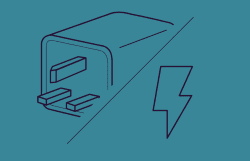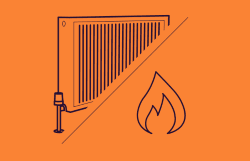Did you know – If the global population carries on growing as currently predicted, by 2050, to provide the natural resources needed to sustain current lifestyles, we would need the equivalent of almost three planets?
This frightening statistic is one of the many reasons there is increased attention to our carbon footprint and a sharp rise in the adoption of sustainability commitments.
This had led to a demand for renewables in the commercial, industrial, and institutional sectors.
It has resulted in more innovations in the structuring of renewable energy power purchase agreements. But what are power purchase agreements? What types of power purchase agreements are there?
Well, this guide should answer all your questions.
What Is A Power Purchase Agreement?
Power Purchase Agreements, or PPA for short, is a long-term contract where a business will agree to purchase their electricity directly from a renewable energy generator.
PPAs can help to deliver an increase in renewable energy, as they prove financial certainty to the project developer, removing a significant roadblock needed to create new renewable facilities.
What Are The Different Types Of Power Purchase Agreements?
When we talk about the types of PPAs, it is hard to define all the different types as there is such a variety of possible and practised contractual arrangements. Furthermore, it is difficult to define PPA characteristics in a single system.
However, we have broken PPAs into a few categories to make it a lot clearer.
Physical PPAs
For physical PPAs, we will sort them into three groups. Some overlap among the three and there are common similarities between them, such as all three being a fixed quantity of electricity that is supplied and sold in the PPA. The main difference to separate the three is how the electricity is supplied.
| On-site PPAs | Off-site PPAs | Sleeved PPAs |
| On-site Power Purchase Agreements are a direct physical supply of electricity. The generation plant is situated behind the metering point of the consumer. Sometimes, they are in the same location, for example, on-site at a company. For the specific installation and also the parameters of the PPA, the consumption profile of the consumer will be the decider. As the electricity is generated by an on-site PPA, the company’s consumption levels are decreased. This means that all on-site PPAs are also corporate PPAs. We will cover corporate PPAs later on. | There isn’t a direct physical supply of electricity between the plant and a nearby consumer for off-site PPAs. Off-site PPAs are agreements to purchase a physical quantity of electricity as specified in the PPA. The difference between on-site PPAs is that the producer will deliver the electricity to the consumer through the public grid. For this to happen, an additional settlement must be made through the consumer and the balancing groups of the electricity generating plant. The consumer does not need the power generation plant to be located close, meaning there is added flexibility. The plant operator is able to pick a location that has optimal conditions or a plant that already exists. | A sleeved PPA is the same as an off-site PPA but with the energy service provider taking on various processes. They act as an intermediary between consumer and producer, providing services such as; aggregating various electricity producers, balancing group management, supplying residual quantities of electricity, preparing feed-in forecasts, selling surplus quantities, marketing green certificates, or assuming various risks. |
What Are Synthetic PPAs?
Synthetic PPAs, sometimes known as virtual PPAs decouple the financial flow from the physical flow of electricity, giving more flexibility in contractual arrangements.
For synthetic Power Purchase Agreements, known as SPPAs, the same occurs, with consumers and producers agreeing on a price per kilowatt-hour of electricity.
However, the difference is that the electricity is not supplied directly to the consumer from the energy generating plant. The producer’s energy service provider takes the produced electricity into its balancing group and then trades it.
The supplier will procure the exact feed-in profile that is supplied by the producer to its energy service provider on behalf of the consuming PPA partner. Procurement will happen on a platform such as the spot market.
Electricity flow is supplemented by a contract for difference in the synthetic PPA. The PPA contract partners try to compensate for the difference between the actual spot market price and the agreed PPA price.
This will mean that in the PPA, each contractual partner has two payment streams. They are:
- Payment streams with the respective energy service provider
- Payment streams with the PPA contractual partner.
For both cases, the payments will add up to the PPA price that is agreed at the beginning, leaving both sides with the desired price security.
What Are Corporate PPAs?
Corporate Power Purchase Agreements, also known as CPPAs, are long-term agreements where a business agrees to purchase electricity directly from an energy generator.
There has been a sharp rise in the size and frequency of contracts involving CPPAs. Worldwide, large corporates have entered CPPAs, allowing them to directly demonstrate their green credentials.
Just in Europe, there was a 70% increase from 2017 with 2.4 GW of renewable CPPAs in 2018. 85% of these renewable CPPAs have been signed for wind energy, mainly because much of the activity has focused on countries with a high wind resource. These include:
- Sweden
- Norway
- The Netherlands
- The UK
Strong activity between Sweden and Norway adds to the Nord Pool power market, facilitating the cross-border sale of electricity between the Nordic countries.
Also, Bloomberg New Energy Finance (BNEF) stated that in 2017, there was almost a 20% increase from 2015, in the level of clean energy generated through CPPAs.
What Are The Benefits Of PPAs?
Power purchase agreements are the energy source of the 21st century. However, what is it that make these agreements so popular for commercial, industrial, and institutional businesses?
| Sustainable | The companies can achieve their carbon reduction goals effectively with PPAs. With the global crisis of increasing carbon levels, companies can create a more sustainable business model. |
| Reduction In Costs | By using fewer resources, businesses can not only become more sustainable but see a huge cut in costs. Wasting less energy can have a huge impact on a business’s financials. |
| Public Recognition | Businesses can see a boost to their public image by using PPAs. Having a more sustainable brand can be more enticing for customers. Not only this, but people will be more likely to want to work for a sustainable business. |
| Long Term Future | To avoid long-term commodity price risks, as well as yielding savings, PPAs can be a fantastic way to plan for the long-term future of a business. We know that prices for traditional energy sources are subject to market variability. |
| Efficient In The Use Of Resources | PPAs are a great way to improve energy efficiency, as well as waste management. Companies will make a real difference with investment in green energy resulting in new capacity being brought online. |
What Are The Challenges Of PPAs?
The benefits of PPAs are fantastic, however, the variability of renewables does present a challenge for producers, as well as consumers of power.
| Can Be Complicated | There can be some PPAs and leases that are complicated. For PPAs, businesses are required to dedicate both time and money tome sure that they are going to negotiate a fair and reasonable contract with the project developer |
| Restrictions | There are times where PPAs are restricted to customers that are located in competitive electricity markets. This may mean that certain companies are locked out of being able to obtain PPAs. |
| Long Contracts | With the average length of a contract being around 15 years, companies are tied into long obligations with PPAs. Add to this the cost of PPAs sometimes dramatically increasing over time, it may be beneficial for some businesses to look at other options. |
| End Of Contracts | Once the contract comes to the end of its term, usually around 15 years, there are typically three options for companies. They can purchase the system at the market value, extend the term of your PPA, or arrange for the installer to remove the system from the premises |
| Price Increases | Sometimes PPAs can increase the price that you pay for the electricity that your system produces over the term of the agreement. This is called the escalation rate. There are times where the escalation rates are very expensive, so we recommend taking a closer look at the fine print of your contract. |
What Organisations Use Physical PPAs?
There are many large, well-known companies and organisations that have used physical PPAs in the past. Since they took off in 2013, some of the brands and organisations that have utilised physical PPAs are:
- Walmart
- District of Columbia Government
- Stanford University
What Are Alternative Methods For Decarbonisation?
We know that entering into CPPAs can increase an organisations sustainability. However, there are other methods other than PPAs for businesses to meet their decarbonisation and emissions reduction objectives. These can include:
- Improving energy efficiency – A simple and cheap method is to improve energy efficiency measures. This can be as easy as upgrading windows and insulation, installing more efficient lighting and equipment, adding motion sensors and other devices that power down equipment when they are not in use.
- Purchasing RECs from verified generators – By purchasing RECs from verified generators, companies can offset their non-renewable energy consumption.
- Green tariffs for power purchases – Signing up to a green tariff when purchasing electricity is a way to increase sustainability. The supplier will ensure they procure enough renewable power to supply the customer.



